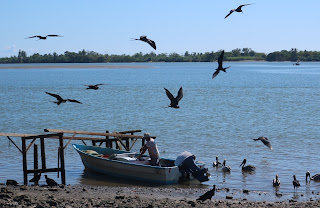Yesterday, I walked up the Chirripo trail to just above the tree line (3100 m); a 20 km round trip, gaining 1600 m in altitude. We set off at 4:30am, and it got light enough for birding at around the 2300 m mark.
The only new species of bird seen was a female
Magnificent Hummingbird, however it was also nice to see
Large-footed Finch,
Sooty Thrush,
Volcano Junco,
Volcano Hummingbird and
Black-capped Flycatcher again.
As we were having a biscuit break at the top, a
Swallow-tailed Kite flew over before hunting low over the hillsides.
The highlight however was a very intimate moment with a group of
Spotted Wood-quails. Sitting quietly on the floor, they would approach, seemingly without any fear, to just a few centimetres.
 |
| Spotted Wood Quail - taken on 0x zoom with my compact camera. |
 |
| I hope they don't behave the same way when they encounter Ocelots. |
 |
| Black-capped Flycatcher |
 |
| Black-billed Nightingale-thrush |
 |
| Buffy Tuftedcheeck |
 |
| Slaty Flowerpiercer |
 |
| The sky remained crysal clear for the whole walk. |

























































